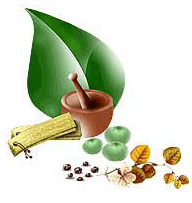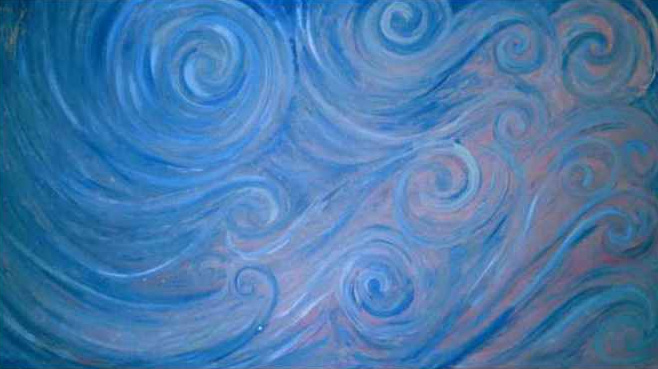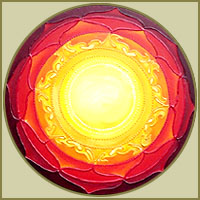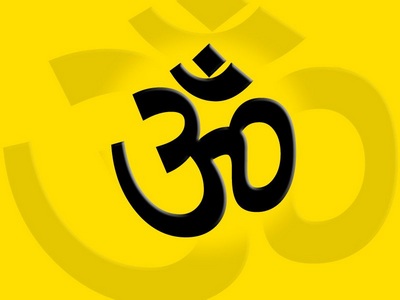|
What Is Ayurveda?…  Elements... Elements...  Doshas... Doshas...
Ailments
 What Diseases Does Ayurveda Treat? What Diseases Does Ayurveda Treat?
Ayurveda does not treat disease, but rather the energetic imbalance causing the disease. It is particularly effective in restoring balance to those suffering from chronic conditions. Examples of this include asthma, insomnia, digestive disturbances, headaches, ulcers, skin conditions, depression, high blood pressure, arthritis and menstrual difficulties, to name just a few. In addition, for those with no specific noticeable symptoms, Ayurveda helps you to understand the energetic makeup of your own unique body as well as how to maintain your health and well-being so that disease can find no foothold, helping you to stay healthy and balanced for the entirety of your life.
Treatments
What methods are used to restore balance?
Ayurveda utilizes a truly holistic approach to restore balance, addressing all aspects of one’s being. In Ayurveda, body, mind and spirit are interwoven, and all are treated simultaneously. This is accomplished through an endless number of healing modalities including (but not limited to): Food programs, herbs, self-massage, aromatherapy, color and sound therapies, yoga, meditation, breathing exercises, and lifestyle adjustments.
 Does Ayurveda replace traditional healing practices? Does Ayurveda replace traditional healing practices?
Ayurveda and Western medicine can, in fact, compliment each other quite beautifully. Ayurveda uses natural processes and methods to restore and maintain health by addressing disease at its root, thereby resulting in a shift to wellness on a fundamental level. Ayurvedic practitioners are highly trained in appropriate food choices, herbal formulations, lifestyle adjustments, and a multitude of healing modalities that perfectly compliment Western medicine, picking up where Western medicine often leaves off. Ayurveda is complementary to traditional medical practices and does not replace medical diagnosis and treatment.
Do you provide custom herbal formulas?
Yes, a very important part of Ayurveda is individualized treatments that can be adjusted as symptoms improve or change. At Shanti Ayurveda we prepare the majority of our herbal formulations or utilize the herbal pharmacy at the California College of Ayurveda. Teas, capsules, powders, oils and salves can all be created specifically for you, depending on your particular needs.
 If I decide to see an Ayurvedic Specialist, with whom would I be working and what are your qualifications? If I decide to see an Ayurvedic Specialist, with whom would I be working and what are your qualifications?
My name is Marisa Laursen and I am a Clinical Ayurvedic Specialist as well as the owner of Shanti Ayurveda.
As a Clinical Ayurvedic Specialist, my mission is to co-create with you an individualized program for your healing, serving as your guide, coach, teacher and healer along the way. It is my honor and privilege to be a partner in your health care, and I work closely with each client, coming to understand your own uniqueness so that I can best guide and support you on your journey towards optimal health and well-being.
I would like to be helped by Ayurveda. What do I do next?
You may begin by contacting Marisa Laursen at Shanti Ayurveda and scheduling an appointment, marisa@ayurvedacollege.com. At that time she also will be happy to answer any questions that you may have regarding the process. For additional information about consultations, please follow this link: Ayurvedic Consultations…
For information about Ayurvedic treatments, Reiki and Massage please follow these links: Ayurvedic Treatments…
I would love to know more about Ayurveda. Could you explain further?
Certainly. The knowledge of Ayurveda is exceedingly deep and profound, and so far I’ve only explained it in very simple terms. Let’s explore it a bit more deeply, beginning with an explanation that according to Ayurveda, all of nature is composed of five basic elements.
THE FIVE ELEMENTS
The five elements, of which all of nature is created, are more than the tangible elements themselves; they are representations of ideas. They are poetic, symbolic metaphors that help us to understand the building blocks of the entire world around us. The five elements are earth, water, fire, air and ether (space).
Earth
Earth is the idea of solidity and stability. A piece of wood, metal, plastic or bone is made up of the idea of solidity. In the body, earth represents our physical structure. In the mind, earth represents mental stability.
Water
Water is the idea of flow and liquidity. Water represents the liquid form of matter. Water represents not only H20 but also all liquids. In the body, water represents fluid; in the mind it represents gentle, loving and compassionate emotions.
Fire
Fire is the idea of light, heat and transformation. Obviously, fire is hot and gives off light. Its transformative power is seen in its ability to convert wood to ash. Fire creates the heat of fevers and the fire of a cayenne pepper. It illuminates truth and dispels ignorance. In the body, fire governs digestion; in the mind, perception. Emotionally, fire is responsible for fiery emotions such as anger and irritability.
Air
Air is the idea of motion. Everything that moves is propelled by the element of air. It is the force that moves a butterfly, a jet airplane, a person’s arm. It can even move earth in the form of an earthquake. In the body, air represents the movement of nerve impulses, the movement of breath and the limbs. In the mind, it is responsible for the movement of thought.
Ether (Space)
Ether is the idea of connectedness or space. It is the space that exists between things; the space that the other elements fill. It is the subtlest form of matter that can only be perceived in meditation. In the body, ether represents the cavities or empty spaces that exist. In the mind, ether represents consciousness.
In Ayurveda, it is understood that these five elements are the building blocks for everything. Each of these elements also possess specific qualities or attributes (hot/cold, moist/dry, heavy/light, gross/subtle, dense/flowing, static/mobile, dull/sharp, soft/hard, smooth/rough, cloudy/clear). For example, fire is hot and ether is cool. Together, the elements and their attributes forms a basis for understanding the body as well as all of nature. Ayurveda uses the Sanskrit term "Doshas..." to describe the governing forces of the elements and their attributes. The three doshas are Vata, Pitta and Kapha.
The doshas will be explained in greater detail shortly. But first, an understanding of your natural constitution as well as your current state of imbalance is important.
YOUR NATURAL CONSTITUTION vs. YOUR CURRENT STATE OF IMBALANCE

Prakruti: Your Natural Constitution
Your inner nature is called your natural constitution or prakruti. This unique balance of energy was determined at the moment of conception and is with you the rest of your life. Your prakruti is the inherent ideal balance of the three doshas and it expresses itself within your own unique genetic makeup. It determines what is harmonious with your nature and what can cause you to become out of balance, sick, and diseased.
Vikruti: Your Current State of Imbalance
Unbalancing influences such as diet, lifestyle, stress, emotional upsets, physical trauma, and an endless number of other factors can cause you to become out of balance. In Ayurveda, your current state of imbalance is called vikruti. Whereas prakruti describes the balance of the doshas at the moment of conception, vikruti describes their current state. Healing is the process of returning vikruti to prakruti.
Understanding your vikruti and prakruti allows you to knowledgeably make health-promoting choices regarding foods, exercise programs, lifestyle, etc. based on your own uniqueness.
Your constitution is a fundamental balance between three basic energies called doshas.
"Ayurveda does not treat symptoms; it treats the energetic imbalance
producing the symptoms and the body heals itself."
THE DOSHAS: Vata, Pitta and Kapha

An understanding of the doshas forms the foundation for all Ayurvedic healing. A subtle interplay between the doshas determines both our state of health (Prakruti) and our current state of imbalance (Vikruti). By understanding the doshas one can take appropriate actions to eliminate the causes of imbalance and re-establish one’s original constitution. However, Ayurveda does not treat symptoms; it treats the energetic imbalance producing the symptoms and the body heals itself.
Vata
 Vata is created by a combination of the elements ether (space) and air. The driving force behind the other two doshas, vata (“that which moves things”) is responsible for sensory, emotional and mental harmony and balance. Vata exists as the air that we hold in the empty spaces of the body such as in the hollow organs, joints and bone cavities. On an inner level, vata is both life-force energy and the energy of thought that moves within the space of the mind. Vata is very much like the wind - light, cool, dry and mobile. In the body, those people with a predominately vata nature experience many of these qualities. Their bodies tend to be light, their bones thin, and their skin and hair dry. They often move and speak quickly. When out of balance, they may lose weight, become constipated, and have weakness in their immune and nervous systems. These same qualities are also reflected in the personality of a predominately vata person. They tend to be talkative, enthusiastic, creative, flexible, and energetic. Yet when out of balance, they may become easily confused and overwhelmed, have difficulty focusing or making decisions, and trouble sleeping. This becomes more apparent when they are under stress. They are challenged by cool emotions such as worry, fear and anxiety. In order to bring balance to vata, programs are designed that emphasize the opposing qualities of warmth, heaviness, (nourishment), moistness and stability. Vata is created by a combination of the elements ether (space) and air. The driving force behind the other two doshas, vata (“that which moves things”) is responsible for sensory, emotional and mental harmony and balance. Vata exists as the air that we hold in the empty spaces of the body such as in the hollow organs, joints and bone cavities. On an inner level, vata is both life-force energy and the energy of thought that moves within the space of the mind. Vata is very much like the wind - light, cool, dry and mobile. In the body, those people with a predominately vata nature experience many of these qualities. Their bodies tend to be light, their bones thin, and their skin and hair dry. They often move and speak quickly. When out of balance, they may lose weight, become constipated, and have weakness in their immune and nervous systems. These same qualities are also reflected in the personality of a predominately vata person. They tend to be talkative, enthusiastic, creative, flexible, and energetic. Yet when out of balance, they may become easily confused and overwhelmed, have difficulty focusing or making decisions, and trouble sleeping. This becomes more apparent when they are under stress. They are challenged by cool emotions such as worry, fear and anxiety. In order to bring balance to vata, programs are designed that emphasize the opposing qualities of warmth, heaviness, (nourishment), moistness and stability.
Pitta
 Pitta is a combination of the elements fire and water. Pitta, which symbolizes transformation, means “that which digests”. It is responsible for all forms of digestion and transformation within the body, from the cellular level to the workings of the gastrointestinal tract. As fire cannot exist directly in the body, pitta exists in the form of oily and acidic secretions such as digestive enzymes. Its qualities tend to be hot, sharp and oily. This manifests as a tendency to feel warm, oily skin, penetrating eyes, and a sharp mind. Pitta governs digestion on mental and spiritual levels as well– our capacity to digest impressions, emotions and ideas in order to arrive at a perception of truth. People of a predominantly pitta constitution tend to have moderate weight and good musculature. Pitta imbalances include diarrhea, infections, skin rashes, and weakness in the liver, blood and spleen. In order to restore balance to pitta, programs are designed to emphasize the opposing qualities of coolness, heaviness (nourishment), moderation, and decreased stimulation to chill out the nervous system. Pitta is a combination of the elements fire and water. Pitta, which symbolizes transformation, means “that which digests”. It is responsible for all forms of digestion and transformation within the body, from the cellular level to the workings of the gastrointestinal tract. As fire cannot exist directly in the body, pitta exists in the form of oily and acidic secretions such as digestive enzymes. Its qualities tend to be hot, sharp and oily. This manifests as a tendency to feel warm, oily skin, penetrating eyes, and a sharp mind. Pitta governs digestion on mental and spiritual levels as well– our capacity to digest impressions, emotions and ideas in order to arrive at a perception of truth. People of a predominantly pitta constitution tend to have moderate weight and good musculature. Pitta imbalances include diarrhea, infections, skin rashes, and weakness in the liver, blood and spleen. In order to restore balance to pitta, programs are designed to emphasize the opposing qualities of coolness, heaviness (nourishment), moderation, and decreased stimulation to chill out the nervous system.
Kapha
 Kapha types are blessed with strength, endurance and stamina. Kapha types are blessed with strength, endurance and stamina.
Kapha means “that which binds” and it serves as the bodily container for vata and pitta. It is comprised of the elements earth and water, and like these elements, those with a predominantly kapha nature tend to be cool, moist, stable, and heavy. In the body, these qualities manifest as dense, heavy bones; lustrous, supple skin; low metabolism; and large, stocky frames. Psychologically, kapha people tend to be calm, tolerant and forgiving. They often handle stress well, don’t like change, and seek bodily comforts. While they may be slow to comprehend, their long-term memory is excellent.
When out of balance, kaphas tend to experience greed, envy, attachment and possessiveness. They are most likely to have diseases connected to the water principle such as flu, sinus congestion, and excess mucous. Sluggishness, excess weight, diabetes, water retention, lethargy and headaches are also common. In order to bring balance to a kapha nature, the opposing qualities of lightness, dryness and warmth are recommended. Exercise, stimulating activity and weight control are also encouraged.
Summing It Up
Think of the doshas as a tool for understanding the nature of a person’s imbalance. If, for example, a person has symptoms such as frequent rashes, burning indigestion, loose stools, red eyes, and a volatile temper, to many people these symptoms might seem unrelated. But from an Ayurvedic perspective, these are all occurring as a result of a pitta imbalance. Simply put, the body has too much fire in it. It’s running too hot and needs to be cooled down. Once you understand this, healing modalities that are cooling in nature can be utilized. For example, there are numerous remedies for indigestion. Some are heating, some are cooling. If you have a pitta digestive imbalance, you would select cooling foods and remedies. You certainly would not want to be eating cayenne peppers and drinking spicy tea, which in essence would be “adding fuel to the fire”!
At Shanti Ayurveda, when we work with clients we come to an understanding of 1) your Vikruti or current state of imbalance; 2) your Prakruti or natural state of balance; and 3) the nature of the treatments. We then prepare a specialized treatment program for you utilizing appropriate modalities, with the goal being to bring you back to your natural state of balance.
As stated previously, Ayurveda utilizes an endless number of healing modalities including (but not limited to) food programs, herbs, self-massage, aromatherapy, color and sound therapies, yoga, meditation, breathing exercises, and lifestyle adjustments.
We would be happy to work with you to create your own customized treatment program. For more information about the process, please follow this link… Ayurvedic Consultations…
We look forward to guiding and assisting you on your journey to health and harmony!

|